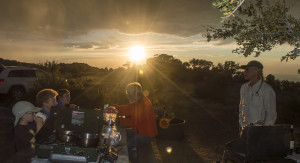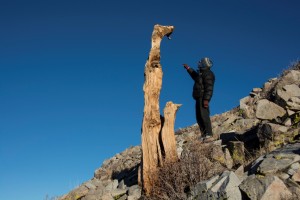
Exploring the natural world. There is plenty yet to do, even in the good ol’ U.S. of A. Compared with the naturalists of yesteryear, today’s explorers have access to amazing technology, mobile air conditioning, and pretty awesome footwear. It is easier than ever to get into lightly-frequented corners of the world, and yet few of us make the choice to do so. Perhaps we believe that simply watching nature shows and listening to the tales of others (or worse, settling for “scientific consensus”) will acquaint us with the world and its workings enough to form a valid opinion on the intersection between the environment, people, and politics. Nothing could be further from the truth.
Not to say that the modern explorer is going to discover new places, but rather those who choose to head for the hills will discover new processes, if they are paying attention. Most of the workings of the environment around us are not purely constant: that is, they vary in nature across the dimension of time. This means that what you observe today is part, but certainly not all, of the story. In fact, most of the time what you see, measure, or quantify today is a tiny snapshot, a pixel in a million-pixel tapestry.
“There is no substitute for spending quality time in the field, at every outing I learn something new.”
Connie Millar, Senior Research Scientist, USDA Forest Service
In this blog, I intend to address a range of fascinating topics from millennial-length tree-ring history to snow hydrology to field procedures to high-tech instrumentation and data connectivity. Jargon will be toned down, and emphasis will be placed on highlighting the usefulness of the science. The occasional humorous field tale will also make an appearance. But most of all, I wish to convey the importance of long-term thinking that so often takes a back seat in our society of self and convenience.

Timeframes of natural processes are all-too-often much longer than days, months, or even years, in spite of the typical length of a university student’s Master’s study. Ecology, hydrology, and climatology are sciences that must retain a long-term perspective, a fact that many of us often forget. In order to place our explorations and observations in context, we cannot content ourselves with a weekend hike or afternoon 4×4 trip every now and again.
Science is the tool of new observation, placed in context of previous observation. Anybody can do it. If the modern explorer wishes to truly discover something new, they simply need to bring current knowledge and immerse themselves in the environment. Spend enough time in the field, and you will eventually see something through different eyes and put the pieces together. Each puzzle piece takes a lot of observation and thought to place, and yes, the puzzle is quite large. The good news is that we have only just started!
If the science and nature puzzle still looks the same to you as it did years ago, then you are doing it wrong.
We have a vast array of tools at our fingertips with which to examine the world around us. The electronic and communications ages brought the ability to make simultaneous measurements of simple physical properties across wide swaths of geography. At present, we can make very detailed observations at individual points, or coarse, sweeping surveys across entire landscapes. Challenges arise when scaling these different observations across time and space, and ensuring the accuracy and representativeness of our measurements. The modern scientific explorer needs to be constantly vigilant of these shortcomings, and seek to improve them at every turn if we wish to advance our knowledge of physical processes rather than simply rely on statistical relationships.
So, lace up your boots, bring an extra layer, and leave the “consensus” at home. It’s time to hit the field.
